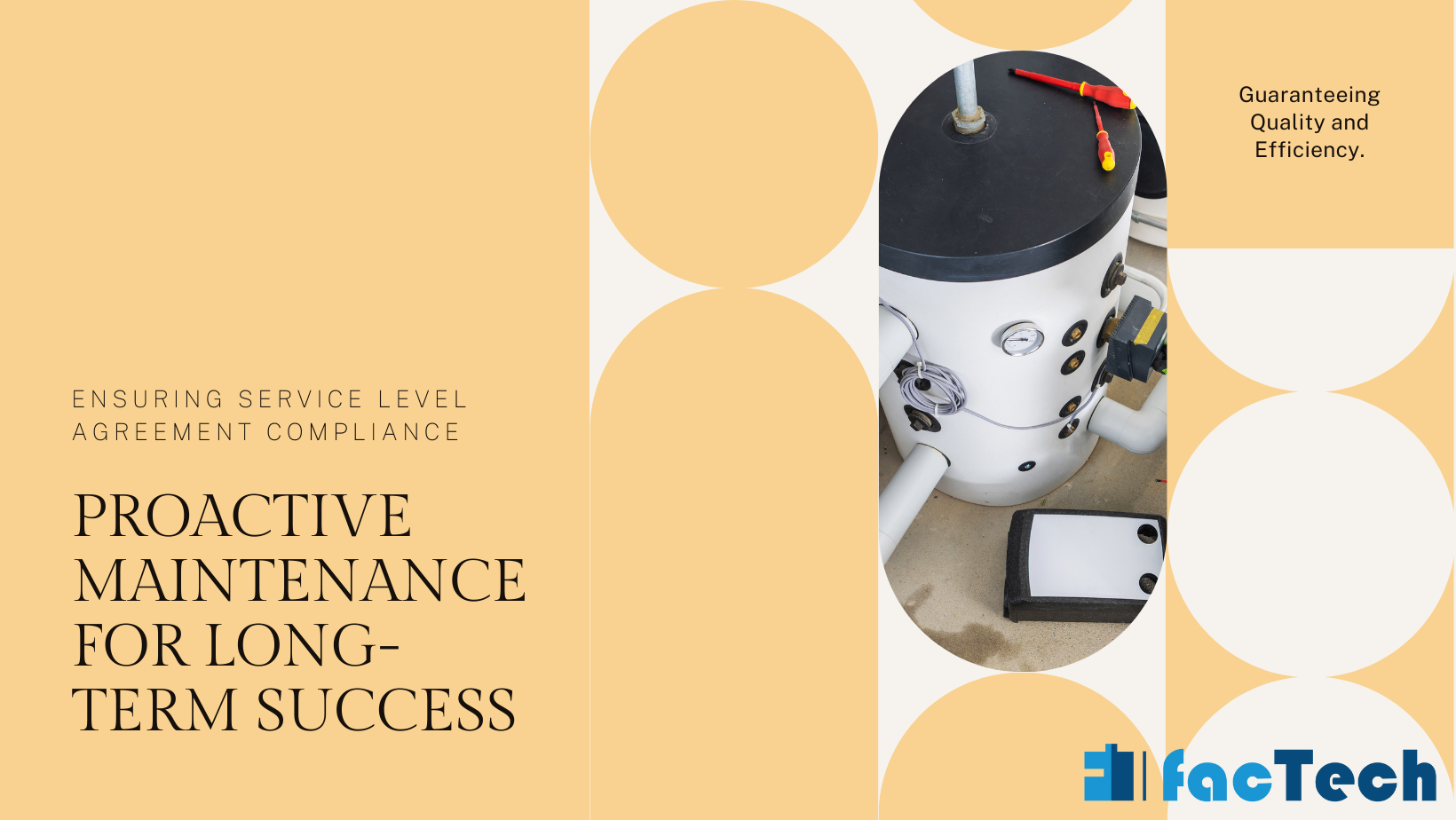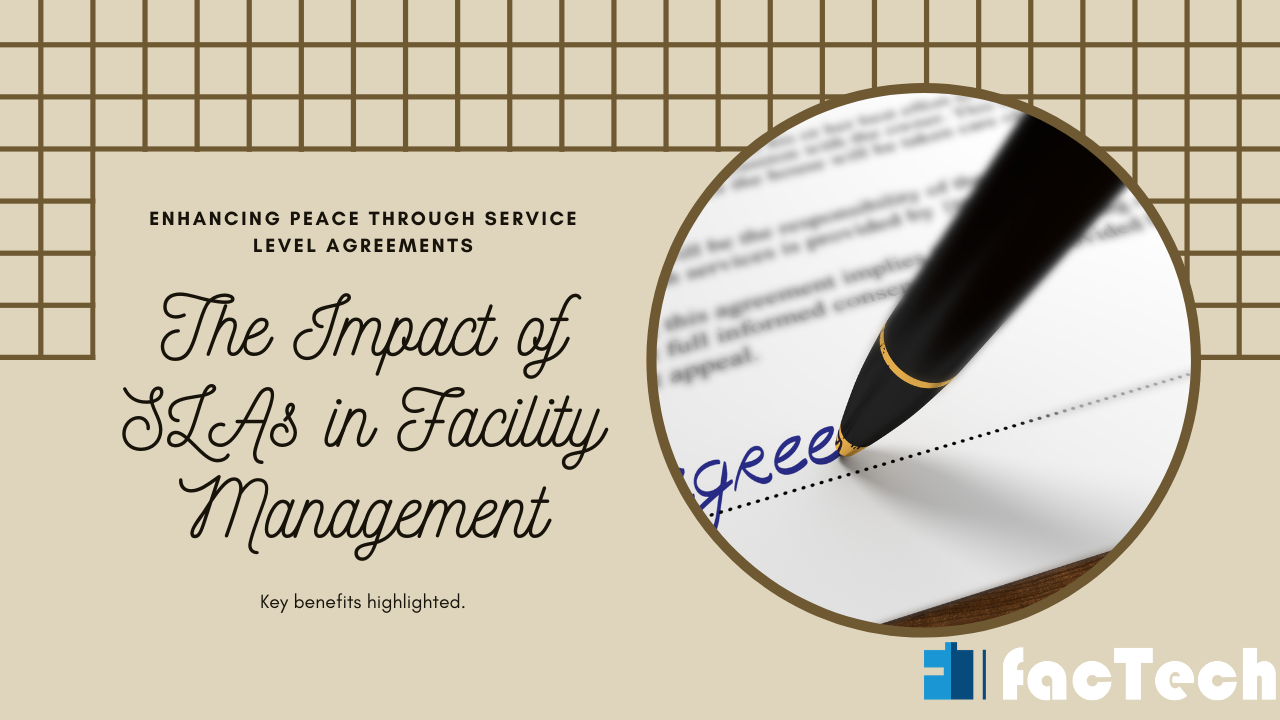SLA in Facility Management
SLA in Facility Management
A building that works well is important for any business. It affects the comfort of users, the productivity of workers, and even the picture of the brand. But how do you make sure that the facility management services are always of good quality? Service Level Agreements (SLAs) can help with that.
What is a SLA in the field of facility management?
An SLA is a formal document that spells out the level of service that is expected for different jobs related to facility management. It’s an agreement between the company (the client) and the service provider (the contractor or the company’s own site management team).
Why is it important to have SLAs?
Clear Expectations: An SLA spells out the services that will be given, how long they will take to respond, quality standards, and how to communicate. This clears things up and makes sure everyone is on the same page.
SLAs: A Way to Keep Costs Down
Facility management (FM) is a tricky job that requires matching good service with smart use of resources. Service Level Agreements (SLAs) become a useful tool in this complicated dance. SLAs spell out the amount of service that is expected for different FM tasks, like when to clean and when to fix things. But how do SLAs help with cost management, which is something that every property manager cares about?
SLAs make it clear what is expected of service providers, whether they are internal employees or outside companies. By setting clear goals for service delivery (for example, a response time of two hours for urgent repairs), SLAs make it easier for:
Proactive Maintenance:
The SLA calls for regular preventive maintenance, which cuts down on the need for expensive reactive fixes.
Read more:
How to track SLAs in Real time
Resource Optimization: SLAs help figure out how to best divide up resources for various service levels. For instance, an area that gets a lot of use might need to be cleaned more often than a storage room that doesn’t get used very often.
Importance of SLA in FM
Performance Monitoring and Improvement:
SLAs make it possible to keep an eye on how services are being delivered all the time. When agreed-upon standards aren’t followed, appropriate actions are taken to stop problems from happening again and the costs that come with them.
Keeping costs down with good SLAs
Making good SLAs is important for getting the most out of cost control. Here are some important things to think about:
Specificity: Be very clear about the levels of service, reaction times, and quality standards that are acceptable. When things aren’t clear, there are arguments and the cost could go up.
Benchmarks That Can Be Used: Set up measurable metrics to keep track of success. One way to measure “cleanliness” would be by the number of dust particles present.
Penalties in money: You might want to add financial fines for not following SLAs. This gives service providers a reason to focus on providing cost-effective amounts of service.
Reviewing often: SLAs are not fixed pieces of paper. Review and update them often to keep up with changes in the facility’s needs and best practices in the business.
Setting service levels with SLAs isn’t the only thing they’re good for; they’re also great for keeping costs down in property management. Facility managers can stay within their budget and keep the workplace clean and productive with the help of SLAs. These agreements spell out clear standards, keep an eye on performance, and encourage teamwork. So, use SLAs to your advantage and see your property management costs settle down to a more stable steady beat.
How can SLAs make things run better?
SLAs are important for better building management because they do a few main things:
Clearly Defined Expectations:
SLAs get rid of confusion and make sure everyone is working toward the same goals by setting clear, measurable expectations for communication, quality, and service delivery timelines.
Better Communication:
The process of making a SLA makes it easier for the client and service to talk to each other. This ongoing conversation makes it possible to keep getting better and adapting to new needs.
Performance Metrics:
SLAs set clear, measurable goals for keeping track of performance. This information makes it possible to evaluate things objectively and find places where things could be better.
Accountability:
When achievement standards are clear, everyone is responsible for their part. This gives the service provider a reason to provide good services and gives the client the power to fix any problems.
Making SLAs that work to improve performance
When making SLAs that lead to better performance, here are some important things to keep in mind:
Find Critical Services: Pay attention to the facility management services that are most important for the day-to-day activities of your business.
Set standards that can be measured: Set clear, measurable goals for each service, like how long it takes to fix things when someone calls, how often the building should be cleaned, or how satisfied the tenants are.
Set up consequences: Describe what will happen if the agreed-upon standards aren’t met. This could lead to fines or changes to the terms of the service agreement.
Regular Checks and Updates: SLAs are not fixed pieces of paper. Review and update them often to keep up with changing needs and best practices in the business.
Facility managers can set up a framework for continuous improvement, make sure services are delivered efficiently, and eventually make the workplace more productive and enjoyable by putting in place well-thought-out SLAs.
Building Bridges, Not Walls: How SLAs Can Help Peace in Facility Management
Any building will have disagreements, but a steady battle between the people who live there and the people who run the building can make it stressful and less productive. A well-written Service Level Agreement (SLA) can make all the difference in this case.
An SLA is a formal document that spells out the amount of service that is expected for different facility management tasks. By making these standards very clear, SLAs can help clear up a lot of confusion and make the workplace a better place to be.
Here are some specific ways that SLAs can help reduce conflict in property management:
1. Clear communication and set standards:
An SLA clears up any confusion by outlining exactly what “good service” means for things like maintaining the right temperature, scheduling repairs, and cleaning. Furthermore, this openness builds trust and makes it less likely that people will feel like their wants aren’t being met.
2. Accountability and communication:
SLAs set a framework for communication by setting reaction times for problems. People who live or work in the building know when to expect a reaction, and management has a clear window of time to act. This clear definition of responsibility helps deal with concerns quickly, which keeps things from getting worse and more frustrating.
3. Working together to solve problems:
SLAs can help people talk to each other more freely. When problems happen that aren’t covered by the SLA, it gives both sides a chance to talk about how to fix them. This encourages people to work together, and the focus shifts from pointing fingers to finding an answer that works for everyone.
4. Constantly getting better:
SLAs are not fixed pieces of paper. Changes can be made by studying and revising them often based on usage data and feedback. This shows that the building’s management is dedicated to always making things better and lets residents know that their issues are heard.
Creating Useful SLAs:
Pay attention to the results; don’t get caught up in micromanaging. Focus on the result you want (like a comfortable working temperature) instead of the steps you need to take to get there (like changing the thermostat settings).
Be Clear and Flexible: Set clear service levels, but be ready to be flexible in case something unexpected comes up.
Involve Stakeholders: Furthermore, ask occupants for their thoughts on the SLA creation process. This makes people feel like they own it and gets more people to buy in.
Setting clear standards, encouraging communication, and encouraging teamwork are all things that SLAs can do to help reduce conflict and make any workplace a better place to be.
What Should Be in a Facility Management SLA?
What is written in a SLA will depend on the building and what it needs. However, some things are the same, such as:
Services Covered: A full list of the services that are covered by the agreement, like cleaning, maintenance, security, landscaping, and more.
Service Levels: Clear, measurable goals for each service, like how quickly repairs are done and how often the building is cleaned.
Reporting and Communication: In addition, steps to take to report problems, ways to talk to people about them, and how often problems should be reported.
Remedies and Consequences: what happens when service levels aren’t met (penalties) or when goals are exceeded (service credits).
Review and Escalation Process: Finally, a plan for going over the SLA again and a way to take unsolved problems to a higher level of management.
Final Thoughts
SLAs are a powerful way to make sure that property management works well. SLAs make sure that everyone knows what is expected of them. Also, the performance is tracked, and that there are consequences for breaking the rules. Because of this we get consistent service quality and better communication. In the end, a facility runs smoothly and helps your company reach its goals.







